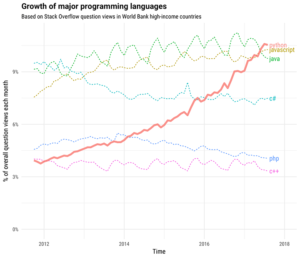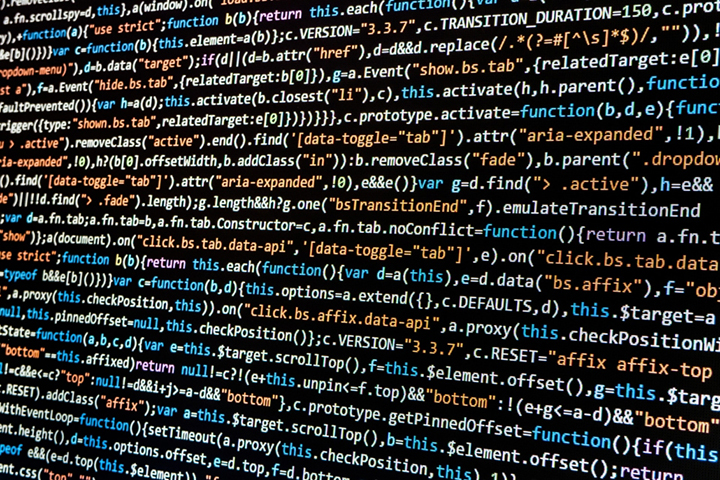Technology has undoubtedly helped in easing the struggles amid the pandemic, but it is also important to understand the workings behind it that makes functioning of Netflix, Facebook and other apps easier
As the world faces a pandemic and people are forced to follow tenets of social distancing, ‘normal life’ stands disrupted and our reliance on technology increases. In such a scenario, the likes of Netflix become our source of entertainment; Facebook is all the more important in ensuring that our social life does not come to a standstill and Zoom makes work meetings easier. Powering all these innovations that have made living with the Coronavirus possible are programming languages that allow us to interact with machines.
In the world of programming, a name that has been emerging with a lot of promise for the future is Python. Currently used by a large section of the tech industry, the language has been gaining ground since 2016 and in 2020 has become the talk of the town. Conceived in the late 1980s, with its implementation starting in December of 1989 by Guido van Rossum at CWI in the Netherlands, Python was developed as a successor to ABC. However, when Java and C++ took centrestage, Python did not receive the attention it enjoys today.
Even though languages like C++ are seen by developers as being more polished, there has been a general shift in the way it is being used. Developers believe that Python, with its shorter learning curve and implementation, is the better language when working with data analysis and Artificial Intelligence (AI) or machine learning, both of which are seen as the future of the tech industry.
To understand the surge in the use of Python as the driving force behind current as well as future innovations, one need not look far. YouTube, the popular video streaming app, uses Python as its coding language, so do other popular applications like Google, Facebook, Spotify, Reddit, Instagram, Netflix. The list goes on and on.
In 2019 alone, according to a report by Forbes in the magazine’s research and analysis of ‘technical skills’, the use of Python saw a 456% growth rate. This growth rate in part can be attributed to the adoption of the language by students who have started relying on it for data analysis and curation.
“As the penetration of mobile devices increases, we will have more collection points for data that needs to be processed for use in different areas to map business strategies and work on them. Programming languages like Java and C++ that we currently use have their limitations and it takes years to master them. This is not the case with Python which is comparatively easier to understand and use,” says Devashish Motawani, a student pursuing MBA from IIM Shillong.
Talking about his experience using the language during his internship, he says, “Python has definitely made life easier. From scrapping the data to analysing it, it’s magical to see a few lines of code do so much. It’s been only two months since I first learned to code in Python, and I am already using it for my internship with TATA Steel to come up with better insights for the company. It’s easy to learn and implement even with my limited knowledge, I’ve been creating beautiful graphs and charts on Python. And this is only the start. I wonder what all is left for me to discover.”

He further adds that earlier only a handful of students opted for Python as an elective while pursuing their MBA. This, however, has changed and now a lot more people are opting to learn the language. A large number of online courses, offering to teach Python have also helped increase its popularity.
An aspect of the tech world which has repeatedly made headlines, not always for the right reasons, is AI. Seen as the future of the tech world, machine learning in recent years has seen exponential growth. Part of this growth can be attributed to the use of Python as the language being used for programming machine learning.
“One of the reasons why Python has seen such a huge surge in its popularity even though other languages like R, Tableau and Julia exist, at times with better functionality, is that in the time it has existed, an intensive network of communities providing libraries which provide access to specific functionalities have come up,” says Prateek (name changed on request) a Computer Science Engineer with previous experience in data science, currently pursuing his MBA.
He further adds that even though the popularity of Python has witnessed exponential growth, the use of other languages has not diminished in any way. “I personally am of the opinion that the growth of Python was facilitated in part because of the boom in data sciences. As the need for data processing grew the need for a language which could provide quick results gave a tremendous boost to the use of Python and even after its tremendous growth the need for languages that are closer to machines like Java and C++ has not decreased.”
“There are better languages out there which can be used for data sciences and have their own merits but even then while working as a freelancer most of the requests I get are for use of Python”. The reason, he says, is the same: its closeness to natural human language rather than binary machine language, which makes it easier for beginners. Python also makes coding easier, as a code that can be summed up in one line on Python, will take at least 200-300 lines in binary.
The presence of programming languages that make it possible for humans to interact with machines has ensured the continued growth in the tech world. As these languages become more and more advanced, bridging the gap between human and machine languages, growth will become even easier.
(Cover:





